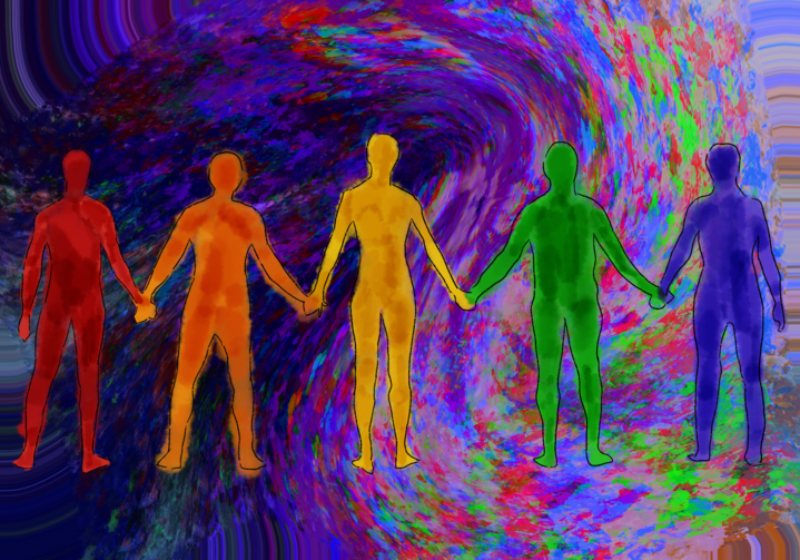Upon the release of his sophomore self-titled release, Bon Iver’s Justin Vernon made it abundantly clear that he is a master of balancing between too radical and not different enough.
Typically, when an artist finds success in a given style, they continue their body of work in a way that is cohesive and non-alienating to their newfound fan base. Any desire to retain relevance also requires that some change be made from release to release.
With “Bon Iver, Bon Iver” (the act’s second release and first as a multi-member band), Vernon pushed experimentation to a dangerous degree but was enormously successful in creating an album that felt very different from his debut “For Emma, Forever Ago,” while still retaining his signature songwriting character.
Now, Vernon has returned from a five-year battle for self-definition with “22, A Million.”
The album’s first words—“It might be over soon” in the opening track “22 (OVER S∞∞N)”—point to the search for answers and internal resolution in the face of fame that Vernon has been grappling with for these past few years. This song also introduces the overall sonic motifs of the album quite well, with lo-fi, warbly, and pitch-shifted sounds being presented directly alongside lush, dense, higher-fidelity elements.
The album’s most aggressive track “10 d E A T h b R E a s T ⚄ ⚄,” is a clear example of how the artists Vernon has collaborated with in the past few years, namely rapper Kanye West, have rubbed off on him. The highly distorted, driving drum beat in this song, as well as the ear-ripping bass synth sound, are evocative of trademark Kanye production that can be found on albums such as 2013’s “Yeezus.”
The track “33 GOD” is where the album returns sonically to the sort of poly-fidelity production heard in the opening track. The instrumentation in this song keeps things intriguing throughout, with the introduction of a brash, overdriven drum groove and choppy vocal samples about halfway through. The last few lines of the lyrics profess a desire and motivation in Vernon to move on from his demons, with him singing, “I could go forward in the light, well, I better fold my clothes.”
“22, A Million’s” is the best example of how profoundly excellent Vernon is at taking a familiar song format, tearing it to shreds through sonic manipulation, and reassembling it in a way that preserves its familiarity. The poly-fidelity production also sees its most potent use in this track, with the song’s final chorus breaking apart and dissolving through an intentional playback malfunction as its melody ascends higher and higher.
This startling breakup at a climactic moment in the song and the album is a risky move, but one executed to great effect in highlighting Vernon’s desperation to express and understand the complex demons that have fueled the creation of this album’s songs.
Tracks “- 666 ʇ”, “21 M♢♢N WATER”, “8 (circle)” flow together in tone, with “21 M♢♢N WATER” serving as an interlude between the other two. “666 ʇ” is the most catchy and pop-like on the album in terms of composition, evoking the style of ‘80s artists like Peter Gabriel.
While this number in particular is upbeat and soothing, it lacks the edge and dynamic changes of the album’s stronger tracks.
The same can be said of “21 M♢♢N WATER” at its beginning, but this track builds and disintegrates in a way that its preceding track does not. The tension that is built toward the end of this track is immediately released at the beginning of “8 (circle),” a choice that is questionable and compromises the impact of “21 M♢♢N WATER’s” sonic build.
Closing the album, “00000 Million” brings back the folk-like songwriting of “29 #Strafford APTS” and closes the album’s lyrical themes powerfully.
The line, “If it’s harmed, it’s harmed me, it’ll harm, I let it in,” is a clear final word on Vernon’s acceptance of the depression and anxiety he has struggled with, reflecting the sentiment of the album’s opening lyric. The song’s wistful and folky tone along with its cryptic yet confessional lyrics bring the album down gently and offer a sense of release and closure after “22, A Million’s” sonic crusade.
In the context of Bon Iver’s discography, “22, A Million” is a clear peak of the otherworldly, genre-shattering composition and production that now define Vernon. At its strongest moments, the album strikes that perfect balance between experimentation and accessibility, while at its weakest it comes uncomfortably close to muzak.
Lyrically, Vernon is as cryptic as ever, but his ambiguity and use of nonexistent words like “paramind” and “astuary” are effective, albeit rather meta, ways of expressing his struggle to convey his turmoil. This is an album that will certainly polarize in its experimental nature and alienate some while earning the adoration of others.
It can be widely agreed, however, that “22, A Million” cements Vernon as a maestro of pushing boundaries and bringing his music to places no one ever thought it would go.


